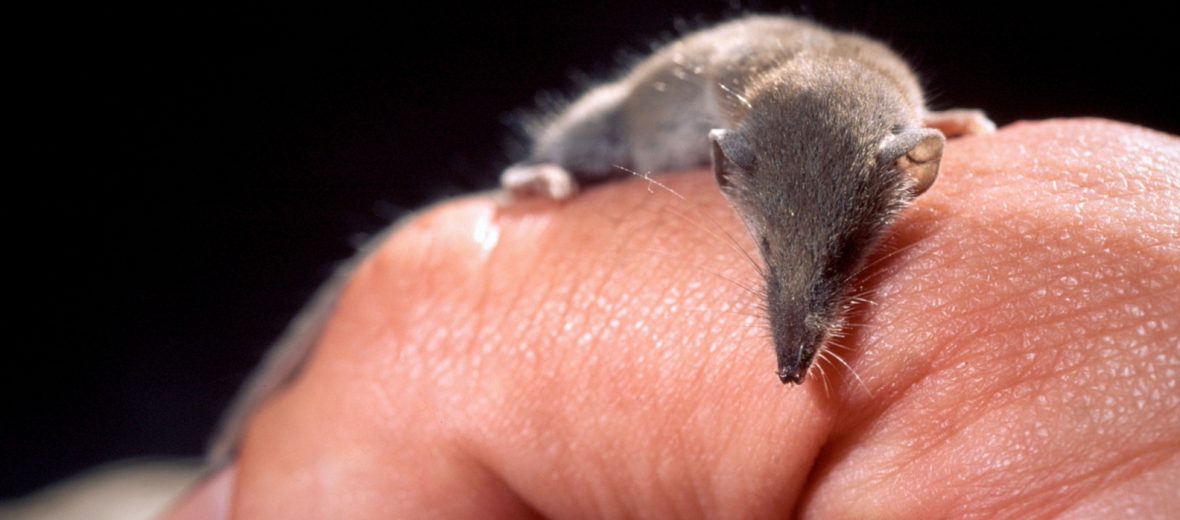
The Etruscan shrew, aka pygmy Etruscan shrew or pygmy white-toothed shrew, can be found from north Africa, to Europe, all the way to Malaysia. They prefer damp and warm habitats with plenty of shrubs for cover from air-based predators. While they can be found along coastlines, they tend to dwell mostly among the foothills and the bases of mountain ranges. These diminutive critters also like riparian thickets near rivers and streams, as well as near farmlands. Due to their widespread population and presumed stable population, Etruscan shrews are listed as Least Concern by the IUCN. They do suffer from habitat loss & destruction, as well as from climate change.
First the Stats…
Scientific name: Suncus etruscus
Weight: Up to .088 ounce
Length: Up to 2 inches, plus up to a 1.26 inch tail
Lifespan: Up to 2 years
Now on to the Facts!
1.) Etruscan shrews have an incredibly fast metabolism and thus need to consume up to 2x their body weight in food each day!
2.) These shrews are solitary and only come together to mate.
3.) They are also territorial critters as well, defending their territory via vocal chirps and generally aggressive behavior.
4.) The Etruscan shrew makes a constant clicking noise when on the move. This only stops when they do.
5.) Pygmy white-toothed shrews are nocturnal (active at night).
But wait, there’s more on the Etruscan shrew!
6.) With typically sub-par vision, they rely mostly on their incredible sense of touch, rather than their sight.
7.) During colder times of the year, they may also enter into a state of torpor (brief hibernation-like state).
Did you know…?
Etruscan shrews are considered the smallest known extant mammal by body mass.
8.) A group of shrews is called a colony or drove.
9.) Earthworms, insects, larvae, younger and smaller amphibians, lizards, and rodents are all on the menu. These critters can also take on prey nearly as large as themselves.
10.) Females undergo up to a 28 day gestation (pregnancy) that yields up to 6 shrewlets.
But wait, there’s still more on the Etruscan shrew!
11.) Shrewlets are born altricial (blind and helpless) and weighing in at only .0071 ounce!
12.) The mother moves her young at 10 days old, by caravanning them to a new destination, for safety.
13.) Shrewlets are weaned at just 20 days old.
14.) They are reproductively mature at just about 5+ weeks of age.
15.) These critters are preyed on primarily by owls.
Now a Short Etruscan Shrew Video!
Be sure to share & comment below! Also, check out the Critter Science YouTube channel. Videos added regularly!
Want to suggest a critter for me to write about? Let me know here.
Photo credit: Trebol-a



